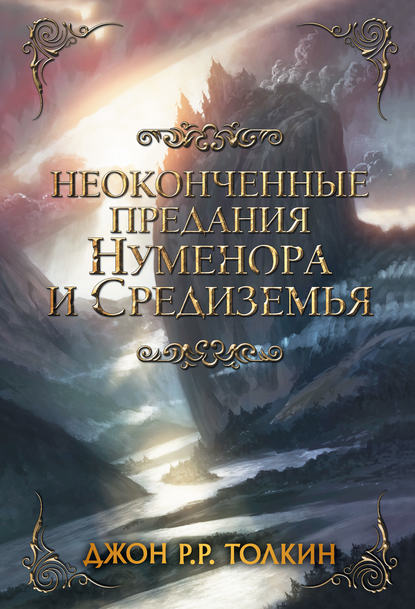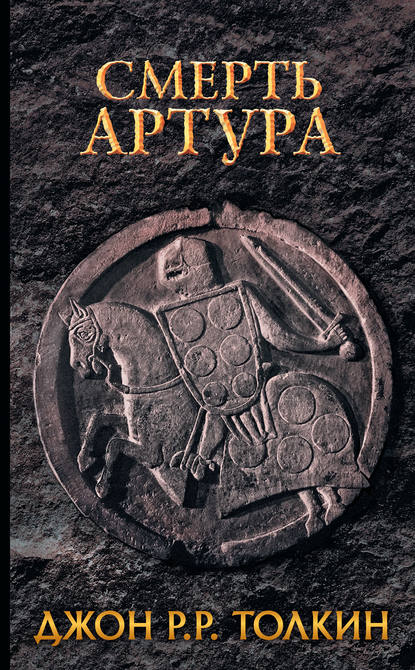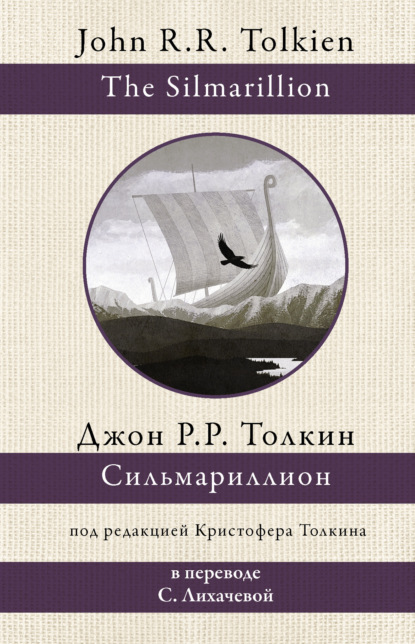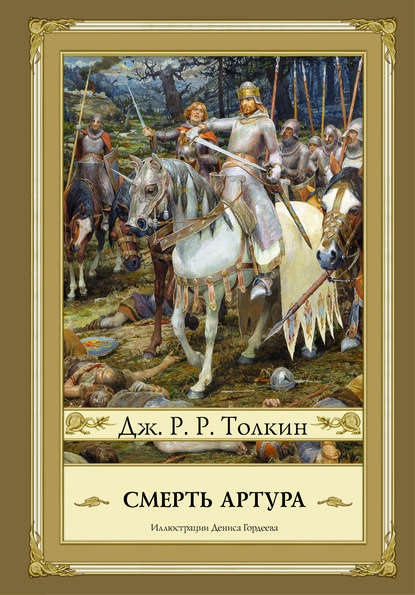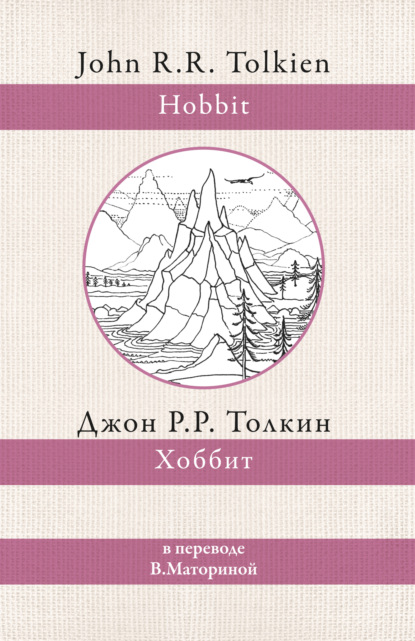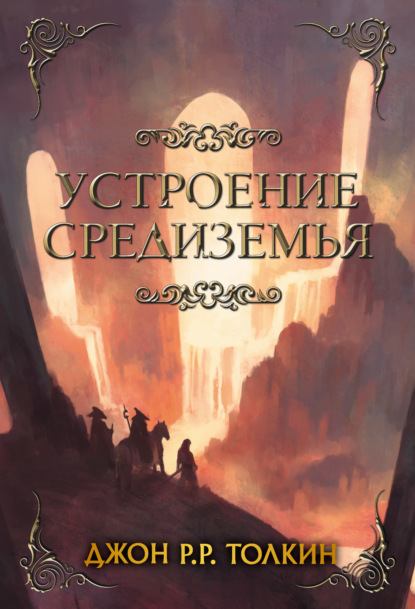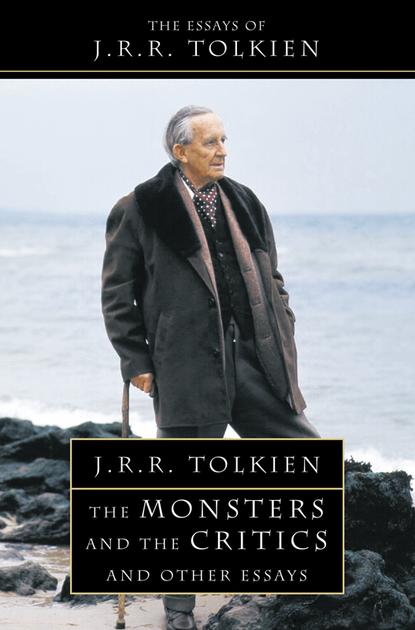
Полная версия
The Monsters and the Critics
But in England this imagination was brought into touch with Christendom, and with the Scriptures. The process of ‘conversion’ was a long one, but some of its effects were doubtless immediate: an alchemy of change (producing ultimately the mediaeval) was at once at work. One does not have to wait until all the native traditions of the older world have been replaced or forgotten; for the minds which still retain them are changed, and the memories viewed in a different perspective: at once they become more ancient and remote, and in a sense darker. It is through such a blending that there was available to a poet who set out to write a poem – and in the case of Beowulf we may probably use this very word – on a scale and plan unlike a minstrel’s lay, both new faith and new learning (or education), and also a body of native tradition (itself requiring to be learned) for the changed mind to contemplate together.19 The native ‘learning’ cannot be denied in the case of Beowulf. Its display has grievously perturbed the critics, for the author draws upon tradition at will for his own purposes, as a poet of later times might draw upon history or the classics and expect his allusions to be understood (within a certain class of hearers). He was in fact, like Virgil, learned enough in the vernacular department to have an historical perspective, even an antiquarian curiosity. He cast his time into the long-ago, because already the long-ago had a special poetical attraction. He knew much about old days, and though his knowledge – of such things as sea-burial and the funeral pyre, for instance – was rich and poetical rather than accurate with the accuracy of modern archaeology (such as that is), one thing he knew clearly: those days were heathen – heathen, noble, and hopeless.
But if the specifically Christian was suppressed,20 so also were the old gods. Partly because they had not really existed, and had been always, in the Christian view, only delusions or lies fabricated by the evil one, the gastbona, to whom the hopeless turned especially in times of need. Partly because their old names (certainly not forgotten) had been potent, and were connected in memory still, not only with mythology or such fairy-tale matter as we find, say, in Gylfaginning, but with active heathendom, religion and wigweorþung. Most of all because they were not actually essential to the theme.
The monsters had been the foes of the gods, the captains of men, and within Time the monsters would win. In the heroic siege and last defeat men and gods alike had been imagined in the same host. Now the heroic figures, the men of old, hœleð under heofenum, remained and still fought on until defeat. For the monsters do not depart, whether the gods go or come. A Christian was (and is) still like his forefathers a mortal hemmed in a hostile world. The monsters remained the enemies of mankind, the infantry of the old war, and became inevitably the enemies of the one God, ece Dryhten, the eternal Captain of the new. Even so the vision of the war changes. For it begins to dissolve, even as the contest on the fields of Time thus takes on its largest aspect. The tragedy of the great temporal defeat remains for a while poignant, but ceases to be finally important. It is no defeat, for the end of the world is part of the design of Metod, the Arbiter who is above the mortal world. Beyond there appears a possibility of eternal victory (or eternal defeat), and the real battle is between the soul and its adversaries. So the old monsters became images of the evil spirit or spirits, or rather the evil spirits entered into the monsters and took visible shape in the hideous bodies of the þyrsas and sigel-hearwan of heathen imagination.
But that shift is not complete in Beowulf – whatever may have been true of its period in general. Its author is still concerned primarily with man on earth, rehandling in a new perspective an ancient theme: that man, each man and all men, and all their works shall die. A theme no Christian need despise. Yet this theme plainly would not be so treated, but for the nearness of a pagan time. The shadow of its despair, if only as a mood, as an intense emotion of regret, is still there. The worth of defeated valour in this world is deeply felt. As the poet looks back into the past, surveying the history of kings and warriors in the old traditions, he sees that all glory (or as we might say ‘culture’ or ‘civilization’) ends in night. The solution of that tragedy is not treated – it does not arise out of the material. We get in fact a poem from a pregnant moment of poise, looking back into the pit, by a man learned in old tales who was struggling, as it were, to get a general view of them all, perceiving their common tragedy of inevitable ruin, and yet feeling this more poetically because he was himself removed from the direct pressure of its despair. He could view from without, but still feel immediately and from within, the old dogma: despair of the event, combined with faith in the value of doomed resistance. He was still dealing with the great temporal tragedy, and not yet writing an allegorical homily in verse. Grendel inhabits the visible world and eats the flesh and blood of men; he enters their houses by the doors. The dragon wields a physical fire, and covets gold not souls; he is slain with iron in his belly. Beowulf’s byrne was made by Weland, and the iron shield he bore against the serpent by his own smiths: it was not yet the breastplate of righteousness, nor the shield of faith for the quenching of all the fiery darts of the wicked.
Almost we might say that this poem was (in one direction) inspired by the debate that had long been held and continued after, and that it was one of the chief contributions to the controversy: shall we or shall we not consign the heathen ancestors to perdition? What good will it do posterity to read the battles of Hector? Quid Hinieldus cum Christo? The author of Beowulf showed forth the permanent value of that pietas which treasures the memory of man’s struggles in the dark past, man fallen and not yet saved, disgraced but not dethroned. It would seem to have been part of the English temper in its strong sense of tradition, dependent doubtless on dynasties, noble houses, and their code of honour, and strengthened, it may be, by the more inquisitive and less severe Celtic learning, that it should, at least in some quarters and despite grave and Gallic voices, preserve much from the northern past to blend with southern learning, and new faith.
It has been thought that the influence of Latin epic, especially of the Aeneid, is perceptible in Beowulf, and a necessary explanation, if only in the exciting of emulation, of the development of the long and studied poem in early England. There is, of course, a likeness in places between these greater and lesser things, the Aeneid and Beowulf, if they are read in conjunction. But the smaller points in which imitation or reminiscence might be perceived are inconclusive, while the real likeness is deeper and due to certain qualities in the authors independent of the question whether the Anglo-Saxon had read Virgil or not. It is this deeper likeness which makes things, that are either the inevitabilities of human poetry or the accidental congruences of all tales, ring alike. We have the great pagan on the threshold of the change of the world; and the great (if lesser) Christian just over the threshold of the great change in his time and place: the backward view: multa putans sortemque animo miseratus iniquam.21
But we will now return once more to the monsters, and consider especially the difference of their status in the northern and southern mythologies. Of Grendel it is said: Godes yrre bœr. But the Cyclops is god-begotten and his maiming is an offence against his begetter, the god Poseidon. This radical difference in mythological status is only brought out more sharply by the very closeness of the similarity in conception (in all save mere size) that is seen, if we compare Beowulf, 740 ff., with the description of the Cyclops devouring men in Odyssey, ix – or still more in Aeneid, iii. 622 ff. In Virgil, whatever may be true of the fairy-tale world of the Odyssey, the Cyclops walks veritably in the historic world. He is seen by Aeneas in Sicily, monstrum horrendum, informe, ingens, as much a perilous fact as Grendel was in Denmark, earmsceapen on weres wœstmum … nœfne he wœs mara þonne œnig man oðer; as real as Acestes or Hrothgar.22
At this point in particular we may regret that we do not know more about pre-Christian English mythology. Yet it is, as I have said, legitimate to suppose that in the matter of the position of the monsters in regard to men and gods the view was fundamentally the same as in later Icelandic. Thus, though all such generalizations are naturally imperfect in detail (since they deal with matter of various origins, constantly reworked, and never even at most more than partially systematized), we may with some truth contrast the ‘inhumanness’ of the Greek gods, however anthropomorphic, with the ‘humanness’ of the Northern, however titanic. In the southern myths there is also rumour of wars with giants and great powers not Olympian, the Titania pubes fulmine deiecti, rolling like Satan and his satellites in the nethermost Abyss. But this war is differently conceived. It lies in a chaotic past. The ruling gods are not besieged, not in ever-present peril or under future doom.23 Their offspring on earth may be heroes or fair women; it may also be the other creatures hostile to men. The gods are not the allies of men in their war against these or other monsters. The interest of the gods is in this or that man as part of their individual schemes, not as part of a great strategy that includes all good men, as the infantry of battle. In Norse, at any rate, the gods are within Time, doomed with their allies to death. Their battle is with the monsters and the outer darkness. They gather heroes for the last defence. Already before euhemerism saved them by embalming them, and they dwindled in antiquarian fancy to the mighty ancestors of northern kings (English and Scandinavian), they had become in their very being the enlarged shadows of great men and warriors upon the walls of the world. When Baldr is slain and goes to Hel he cannot escape thence any more than mortal man.
This may make the southern gods more godlike – more lofty, dread, and inscrutable. They are timeless and do not fear death. Such a mythology may hold the promise of a profounder thought. In any case it was a virtue of the southern mythology that it could not stop where it was. It must go forward to philosophy or relapse into anarchy. For in a sense it had shirked the problem precisely by not having the monsters in the centre – as they are in Beowulf to the astonishment of the critics. But such horrors cannot be left permanently unexplained, lurking on the outer edges and under suspicion of being connected with the Government. It is the strength of the northern mythological imagination that it faced this problem, put the monsters in the centre, gave them victory but no honour, and found a potent but terrible solution in naked will and courage. ‘As a working theory absolutely impregnable.’ So potent is it, that while the older southern imagination has faded for ever into literary ornament, the northern has power, as it were, to revive its spirit even in our own times. It can work, even as it did work with the goðlauss viking, without gods: martial heroism as its own end. But we may remember that the poet of Beowulf saw clearly: the wages of heroism is death.
For these reasons I think that the passages in Beowulf concerning the giants and their war with God, together with the two mentions of Cain (as the ancestor of the giants in general and Grendel in particular) are specially important.
They are directly connected with Scripture, yet they cannot be dissociated from the creatures of northern myth, the ever-watchful foes of the gods (and men). The undoubtedly scriptural Cain is connected with eotenas and ylfe, which are the jötnar and álfar of Norse. But this is not due to mere confusion – it is rather an indication of the precise point at which an imagination, pondering old and new, was kindled. At this point new Scripture and old tradition touched and ignited. It is for this reason that these elements of Scripture alone appear in a poem dealing of design with the noble pagan of old days. For they are precisely the elements which bear upon this theme. Man alien in a hostile world, engaged in a struggle which he cannot win while the world lasts, is assured that his foes are the foes also of Dryhten, that his courage noble in itself is also the highest loyalty: so said thyle and clerk.
In Beowulf we have, then, an historical poem about the pagan past, or an attempt at one – literal historical fidelity founded on modern research was, of course, not attempted. It is a poem by a learned man writing of old times, who looking back on the heroism and sorrow feels in them something permanent and something symbolical. So far from being a confused semi-pagan – historically unlikely for a man of this sort in the period – he brought probably first to his task a knowledge of Christian poetry, especially that of the Cædmon school, and especially Genesis.24 He makes his minstrel sing in Heorot of the Creation of the earth and the lights of Heaven. So excellent is this choice as the theme of the harp that maddened Grendel lurking joyless in the dark without that it matters little whether this is anachronistic or not.25 Secondly, to his task the poet brought a considerable learning in native lays and traditions: only by learning and training could such things be acquired, they were no more born naturally into an Englishman of the seventh or eighth centuries, by simple virtue of being an ‘Anglo-Saxon’, than ready-made knowledge of poetry and history is inherited at birth by modern children.
It would seem that, in his attempt to depict ancient pre-Christian days, intending to emphasize their nobility, and the desire of the good for truth, he turned naturally when delineating the great King of Heorot to the Old Testament. In the folces hyrde of the Danes we have much of the shepherd patriarchs and kings of Israel, servants of the one God, who attribute to His mercy all the good things that come to them in this life. We have in fact a Christian English conception of the noble chief before Christianity, who could lapse (as could Israel) in times of temptation into idolatry.26 On the other hand, the traditional matter in English, not to mention the living survival of the heroic code and temper among the noble households of ancient England, enabled him to draw differently, and in some respects much closer to the actual heathen hæleð, the character of Beowulf, especially as a young knight, who used his great gift of mægen to earn dom and lof among men and posterity.
Beowulf is not an actual picture of historic Denmark or Geatland or Sweden about A.D. 500. But it is (if with certain minor defects) on a general view a self-consistent picture, a construction bearing clearly the marks of design and thought. The whole must have succeeded admirably in creating in the minds of the poet’s contemporaries the illusion of surveying a past, pagan but noble and fraught with a deep significance – a past that itself had depth and reached backward into a dark antiquity of sorrow. This impression of depth is an effect and a justification of the use of episodes and allusions to old tales, mostly darker, more pagan, and desperate than the foreground.
To a similar antiquarian temper, and a similar use of vernacular learning, is probably due the similar effect of antiquity (and melancholy) in the Aeneid – especially felt as soon as Aeneas reaches Italy and the Saturni gentem … sponte sua veterisque dei se more tenentem. Ic þa leode wat ge wið feond ge wið freond fæste worhte, æghwæs untæle ealde wisan. Alas for the lost lore, the annals and old poets that Virgil knew, and only used in the making of a new thing! The criticism that the important matters are put on the outer edges misses this point of artistry, and indeed fails to see why the old things have in Beowulf such an appeal: it is the poet himself who made antiquity so appealing. His poem has more value in consequence, and is a greater contribution to early mediaeval thought than the harsh and intolerant view that consigned all the heroes to the devil. We may be thankful that the product of so noble a temper has been preserved by chance (if such it be) from the dragon of destruction.
The general structure of the poem, so viewed, is not really difficult to perceive, if we look to the main points, the strategy, and neglect the many points of minor tactics. We must dismiss, of course, from mind the notion that Beowulf is a ‘narrative poem’, that it tells a tale or intends to tell a tale sequentially. The poem ‘lacks steady advance’: so Klaeber heads a critical section in his edition.27 But the poem was not meant to advance, steadily or unsteadily. It is essentially a balance, an opposition of ends and beginnings. In its simplest terms it is a contrasted description of two moments in a great life, rising and setting; an elaboration of the ancient and intensely moving contrast between youth and age, first achievement and final death. It is divided in consequence into two opposed portions, different in matter, manner, and length: A from i to 2199 (including an exordium of 52 lines); B from 2200 to 3182 (the end). There is no reason to cavil at this proportion; in any case, for the purpose and the production of the required effect, it proves in practice to be right.
This simple and static structure, solid and strong, is in each part much diversified, and capable of enduring this treatment. In the conduct of the presentation of Beowulf’s rise to fame on the one hand, and of his kingship and death on the other, criticism can find things to question, especially if it is captious, but also much to praise, if it is attentive. But the only serious weakness, or apparent weakness, is the long recapitulation: the report of Beowulf to Hygelac. This recapitulation is well done. Without serious discrepancy28 it retells rapidly the events in Heorot, and retouches the account; and it serves to illustrate, since he himself describes his own deeds, yet more vividly the character of a young man, singled out by destiny, as he steps suddenly forth in his full powers. Yet this is perhaps not quite sufficient to justify the repetition. The explanation, if not complete justification, is probably to be sought in different directions.
For one thing, the old tale was not first told or invented by this poet. So much is clear from investigation of the folk-tale analogues. Even the legendary association of the Scylding court with a marauding monster, and with the arrival from abroad of a champion and deliverer was probably already old. The plot was not the poet’s; and though he has infused feeling and significance into its crude material, that plot was not a perfect vehicle of the theme or themes that came to hidden life in the poet’s mind as he worked upon it. Not an unusual event in literature. For the contrast – youth and death – it would probably have been better, if we had no journeying. If the single nation of the Geatas had been the scene, we should have felt the stage not narrower, but symbolically wider. More plainly should we have perceived in one people and their hero all mankind and its heroes. This at any rate I have always myself felt in reading Beowulf; but I have also felt that this defect is rectified by the bringing of the tale of Grendel to Geatland. As Beowulf stands in Hygelac’s hall and tells his story, he sets his feet firm again in the land of his own people, and is no longer in danger of appearing a mere wrecca, an errant adventurer and slayer of bogies that do not concern him.
There is in fact a double division in the poem: the fundamental one already referred to, and a secondary but important division at line 1887. After that the essentials of the previous part are taken up and compacted, so that all the tragedy of Beowulf is contained between 1888 and the end.29 But, of course, without the first half we should miss much incidental illustration; we should miss also the dark background of the court of Heorot that loomed as large in glory and doom in ancient northern imagination as the court of Arthur: no vision of the past was complete without it. And (most important) we should lose the direct contrast of youth and age in the persons of Beowulf and Hrothgar which is one of the chief purposes of this section: it ends with the pregnant words oþ þœt hine yldo benam mægenes wynnum, se þe oft manegum scod.
In any case we must not view this poem as in intention an exciting narrative or a romantic tale. The very nature of Old English metre is often misjudged. In it there is no single rhythmic pattern progressing from the beginning of a line to the end, and repeated with variation in other lines. The lines do not go according to a tune. They are founded on a balance; an opposition between two halves of roughly equivalent30 phonetic weight, and significant content, which are more often rhythmically contrasted than similar. They are more like masonry than music. In this fundamental fact of poetic expression I think there is a parallel to the total structure of Beowulf. Beowulf is indeed the most successful Old English poem because in it the elements, language, metre, theme, structure, are all most nearly in harmony. Judgement of the verse has often gone astray through listening for an accentual rhythm and pattern: and it seems to halt and stumble. Judgement of the theme goes astray through considering it as the narrative handling of a plot: and it seems to halt and stumble. Language and verse, of course, differ from stone or wood or paint, and can be only heard or read in a time-sequence; so that in any poem that deals at all with characters and events some narrative element must be present. We have none the less in Beowulf a method and structure that within the limits of the verse-kind approaches rather to sculpture or painting. It is a composition not a tune.
This is clear in the second half. In the struggle with Grendel one can as a reader dismiss the certainty of literary experience that the hero will not in fact perish, and allow oneself to share the hopes and fears of the Geats upon the shore. In the second part the author has no desire whatever that the issue should remain open, even according to literary convention. There is no need to hasten like the messenger, who rode to bear the lamentable news to the waiting people (2892 ff.). They may have hoped, but we are not supposed to. By now we are supposed to have grasped the plan. Disaster is foreboded. Defeat is the theme. Triumph over the foes of man’s precarious fortress is over, and we approach slowly and reluctantly the inevitable victory of death.31
‘In structure’, it was said of Beowulf, ‘it is curiously weak, in a sense preposterous,’ though great merits of detail were allowed. In structure actually it is curiously strong, in a sense inevitable, though there are defects of detail. The general design of the poet is not only defensible, it is, I think, admirable. There may have previously existed stirring verse dealing in straightforward manner and even in natural sequence with Beowulf’s deeds, or with the fall of Hygelac; or again with the fluctuations of the feud between the houses of Hrethel the Geat and Ongentheow the Swede; or with the tragedy of the Heathobards, and the treason that destroyed the Scylding dynasty. Indeed this must be admitted to be practically certain: it was the existence of such connected legends – connected in the mind, not necessarily dealt with in chronicle fashion or in long semi-historical poems – that permitted the peculiar use of them in Beowulf. This poem cannot be criticized or comprehended, if its original audience is imagined in like case to ourselves, possessing only Beowulf in splendid isolation. For Beowulf was not designed to tell the tale of Hygelac’s fall, or for that matter to give the whole biography of Beowulf, still less to write the history of the Geatish kingdom and its downfall. But it used knowledge of these things for its own purpose – to give that sense of perspective, of antiquity with a greater and yet darker antiquity behind. These things are mainly on the outer edges or in the background because they belong there, if they are to function in this way. But in the centre we have an heroic figure of enlarged proportions.



